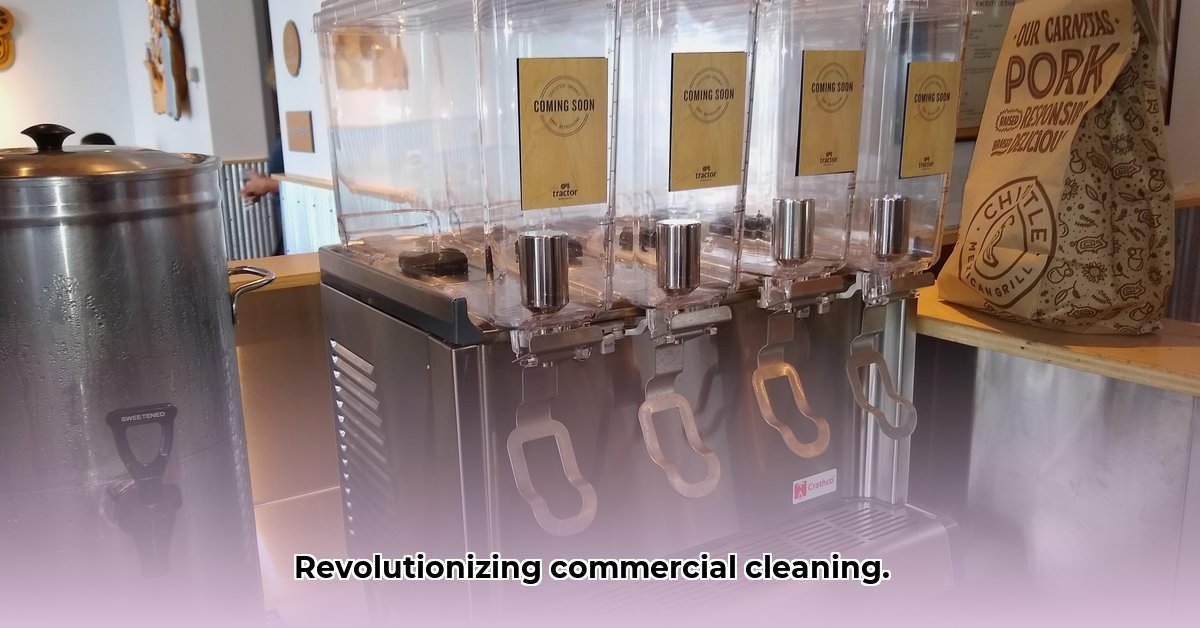
Understanding the TruShot 2.0 Trigger Dispenser: A Technical Review and Practical Guide
Tired of inefficient cleaning processes and inconsistent solution mixing? The TruShot 2.0 trigger dispenser from SC Johnson offers a potential solution by streamlining commercial cleaning operations. This technical review, incorporating elements of a practical guide, analyzes its features, benefits, and limitations to help you determine its suitability for your needs.
Efficiency and Cost Savings: A Comparative Analysis
The TruShot 2.0 utilizes pre-mixed solution cartridges, eliminating the time-consuming process of mixing and diluting cleaning chemicals. This translates to immediate time savings for your cleaning crew. But does this translate to actual cost savings? A thorough Total Cost of Ownership (TCO) analysis, comparing the TruShot 2.0 with traditional methods, is crucial. This analysis should incorporate cartridge costs versus bulk concentrate purchasing, labor cost reductions due to increased efficiency, and potential waste reduction. Don't just look at the initial investment; project long-term cost savings over a period of three to five years to determine true value. Is the increased upfront cost offset by the long-term savings? This is the key question. This detailed comparison is essential for making an informed purchasing decision.
Safety and Regulatory Compliance: Minimizing Risk and Ensuring Adherence
Workplace safety is paramount. The TruShot 2.0 simplifies OSHA compliance by utilizing pre-labeled concentrate cartridges, greatly reducing the risk of mislabeling and ensuring your team's safety. This minimizes the potential for human error stemming from manual mixing and dilution. However, remember that regulatory compliance extends beyond OSHA. Before implementation, always verify that the TruShot 2.0 meets all applicable regulations, including chemical handling, disposal, and spill containment. Conscientious review of Safety Data Sheets (SDS) for all chemicals used in conjunction with the system is mandatory. Safe and consistent operation is paramount.
Durability, Maintenance, and Adaptability: A Long-Term Perspective
The TruShot 2.0 is advertised to have a 250,000 trigger lifespan. Understanding its long-term performance is critical. Factors to consider include: the expected lifespan of individual cartridges, the necessary maintenance procedures for the dispenser itself, and its overall resilience in a commercial setting. The system’s adaptability across different cleaning tasks (restrooms, floors, general surface cleaning) also needs assessment. Does it truly offer a multi-purpose cleaning solution, or are there limitations in its application? Real-world testing and user feedback are valuable sources of information to determine real-world performance.
User-Friendliness and Workflow Integration: Seamless Transition
How easily does the TruShot 2.0 integrate into your existing workflow? While manufacturers often highlight user-friendly designs, a hands-on trial is necessary to assess the actual ease of use and the associated training requirements. Consider the learning curve for your cleaning staff; will minimal training suffice, or is significant retraining required? This evaluation is crucial for efficient adoption and optimal utilization of the system.
Step-by-Step Implementation Guide: A Practical Approach
Before investing in the TruShot 2.0, follow these steps for a successful implementation:
- Pilot Program: Conduct a trial run in a limited area to evaluate efficiency and suitability. This will help you gather data to inform your further decisions.
- Total Cost of Ownership (TCO) Analysis: Perform a comprehensive TCO analysis comparing it to your current method. This should quantify potential savings and costs.
- Comparative Analysis: Compare the TruShot 2.0 to your existing equipment. What are the advantages and disadvantages?
- Negotiate Pricing: Explore bulk cartridge purchasing options to potentially reduce costs.
- Chemical Compatibility: Verify compatibility with your cleaning chemicals; incompatible solutions could affect performance or invalidates warranties.
Risk Mitigation Strategies: Proactive Planning
Potential risks and their mitigating strategies are outlined below:
| Aspect | Likelihood | Severity | Mitigation Strategies |
|---|---|---|---|
| Cartridge Leakage | Unlikely | Moderate | Rigorous quality control from the manufacturer, thorough staff training, prompt manufacturer support. |
| Dispenser Malfunction | Unlikely | Moderate | Comprehensive warranty, readily available customer support, preventative maintenance. |
| Chemical Incompatibility | Possible | High | Clear labeling, detailed compatibility guidelines, rigorous testing before system-wide implementation. |
| Inadequate Staff Training | Possible | Moderate | Comprehensive training with hands-on demonstrations and regular refresher sessions. |
Conclusion: Making an Informed Decision
This technical review provides a balanced assessment of the TruShot 2.0. Remember that a comprehensive evaluation requires a multi-faceted approach, carefully considering both short-term and long-term investments. Further investigation into its long-term performance and comprehensive TCO analysis are essential components in your decision-making process. Remember to always prioritize safety and compliance.